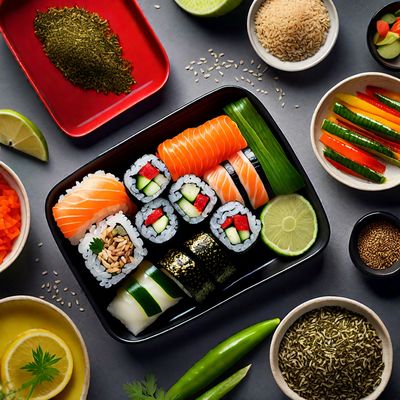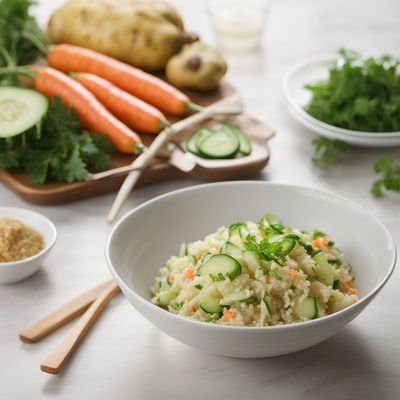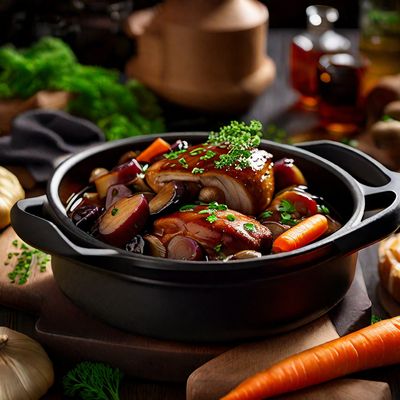
Recipe
Korean-style Sushi Rolls
Kimchi Fusion Sushi: A Korean Twist on Japanese Classic
4.8 out of 5
In Korean cuisine, sushi takes on a unique twist with the addition of traditional Korean ingredients and flavors. These Korean-style sushi rolls combine the delicate art of Japanese sushi-making with the bold and spicy flavors of Korea. Get ready to embark on a culinary adventure that brings together the best of both worlds!
Metadata
Preparation time
30 minutes
Cooking time
15 minutes
Total time
45 minutes
Yields
4 servings
Preparation difficulty
Medium
Suitable for
Pescatarian, Dairy-free, Gluten-free (use gluten-free soy sauce), Nut-free, Low-fat
Allergens
Soy (in soy sauce), Shellfish (if using seafood fillings)
Not suitable for
Vegan, Vegetarian, Paleo, Keto, High-protein
Ingredients
Korean-style sushi rolls differ from traditional Japanese sushi in several ways. The most notable difference is the use of Korean ingredients such as kimchi, gochujang (red chili paste), and sesame oil. Additionally, Korean-style sushi rolls often incorporate cooked ingredients like bulgogi (marinated beef) or grilled vegetables, giving them a heartier and more robust flavor profile. We alse have the original recipe for Sushi, so you can check it out.
-
4 sheets of nori (seaweed) 4 sheets of nori (seaweed)
-
2 cups (470ml) sushi rice 2 cups (470ml) sushi rice
-
1 cup (235ml) water 1 cup (235ml) water
-
1 tablespoon rice vinegar 1 tablespoon rice vinegar
-
1 tablespoon sugar 1 tablespoon sugar
-
1 teaspoon salt 1 teaspoon salt
-
1 cup (150g) kimchi, drained and chopped 1 cup (150g) kimchi, drained and chopped
-
1/2 cup (75g) cooked bulgogi (marinated beef), thinly sliced 1/2 cup (75g) cooked bulgogi (marinated beef), thinly sliced
-
1/2 cup (75g) cucumber, julienned 1/2 cup (75g) cucumber, julienned
-
1/4 cup (60ml) gochujang (red chili paste) 1/4 cup (60ml) gochujang (red chili paste)
-
1 tablespoon sesame oil 1 tablespoon sesame oil
-
Soy sauce, for dipping Soy sauce, for dipping
Nutrition
- Calories (kcal / KJ): 320 kcal / 1340 KJ
- Fat (total, saturated): 4g, 0.5g
- Carbohydrates (total, sugars): 62g, 3g
- Protein: 8g
- Fiber: 2g
- Salt: 1.5g
Preparation
-
1.Rinse the sushi rice under cold water until the water runs clear. Drain well.
-
2.In a saucepan, combine the rinsed rice and water. Bring to a boil, then reduce heat to low and cover. Cook for 15 minutes or until the rice is tender and the water is absorbed.
-
3.In a small bowl, mix together the rice vinegar, sugar, and salt. Heat in the microwave for 30 seconds to dissolve the sugar. Pour the mixture over the cooked rice and gently fold to combine. Let the rice cool to room temperature.
-
4.Place a bamboo sushi mat on a clean surface. Lay a sheet of nori on the mat.
-
5.Wet your hands with water to prevent sticking. Take a handful of sushi rice and spread it evenly over the nori, leaving a 1-inch border at the top.
-
6.Spread a thin layer of gochujang over the rice, followed by a layer of kimchi, bulgogi, and cucumber.
-
7.Using the bamboo mat, roll the sushi tightly from the bottom, applying gentle pressure to ensure a compact roll. Moisten the top border of the nori with water to seal the roll.
-
8.Repeat the process with the remaining ingredients.
-
9.Using a sharp knife, slice each roll into bite-sized pieces.
-
10.Serve the Korean-style sushi rolls with soy sauce for dipping.
Treat your ingredients with care...
- Nori — Make sure to use fresh nori sheets to ensure they are pliable and easy to roll.
- Kimchi — Drain the kimchi well before chopping to remove excess liquid and prevent the sushi rolls from becoming too soggy.
- Gochujang — Adjust the amount of gochujang according to your spice preference. Add more for a spicier kick or reduce for a milder flavor.
- Sushi rice — Use short-grain sushi rice for the best texture and stickiness.
Tips & Tricks
- Wet your hands with water when handling sushi rice to prevent it from sticking to your hands.
- Use a sharp knife to slice the sushi rolls for clean and neat cuts.
- Experiment with different fillings such as grilled mushrooms, pickled radish, or marinated tofu for vegetarian options.
- Serve the sushi rolls with a side of pickled ginger and wasabi for an authentic sushi experience.
- If you prefer a vegetarian version, omit the bulgogi and replace it with grilled tofu or sautéed vegetables.
Serving advice
Serve the Korean-style sushi rolls as an appetizer or main course. Arrange them on a platter and garnish with sesame seeds and sliced green onions for an attractive presentation. Provide soy sauce and wasabi on the side for dipping.
Presentation advice
Arrange the sliced sushi rolls on a rectangular serving dish, alternating the direction of each roll for an appealing visual effect. Garnish with a sprinkle of sesame seeds and a drizzle of sesame oil for added flavor and presentation.
More recipes...
For Sushi » Browse all
For Japanese cuisine » Browse all
More Japanese cuisine dishes » Browse all
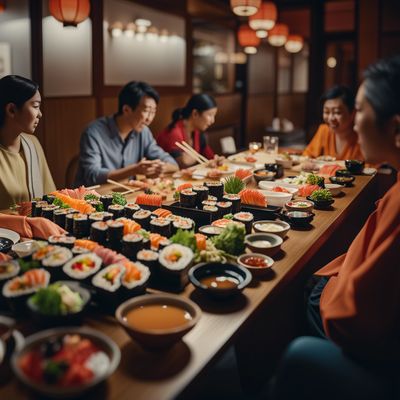
Sushi
Sushi is a Japanese dish that consists of vinegared rice, seafood, and vegetables rolled in seaweed sheets. It is a popular dish worldwide and is...

Ika nigiri sushi
Squid Nigiri
Ika nigiri sushi is a traditional Japanese dish that consists of a small ball of sushi rice topped with a slice of fresh squid. The dish is...

Imagawayaki
Imagawayaki is a traditional Japanese sweet that is made from flour, sugar, and eggs. It is a soft, fluffy pancake that is often filled with sweet...
More Korean cuisine dishes » Browse all
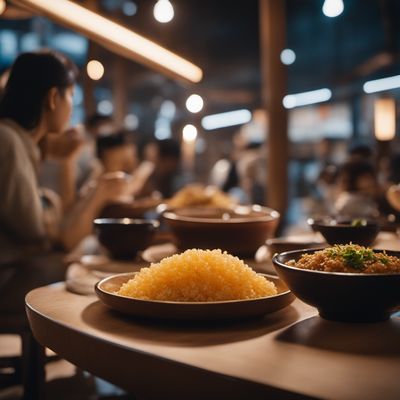
Nurungji
Crispy rice
Nurungji is a traditional Korean dish made from scorched rice. It is a simple and delicious dish that is often served as a snack or dessert.

Memil guksu
Buckwheat Noodles
Memil guksu is a Korean dish made with buckwheat noodles. It is a light and refreshing dish that is perfect for a hot summer day.

Miyeokguk
Seaweed soup
Miyeokguk is a traditional Korean soup made with seaweed and beef broth. It is often served on birthdays and after giving birth as it is believed...


